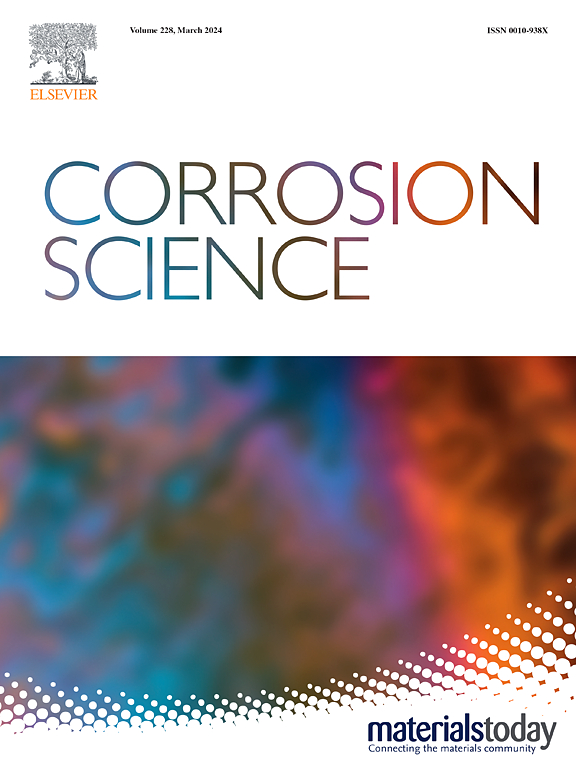The synergistic effect of microstructure evolution on corrosion resistance-mechanical properties of carbon steel/stainless steel cladding tubes during heat treatment
IF 7.4
1区 材料科学
Q1 MATERIALS SCIENCE, MULTIDISCIPLINARY
引用次数: 0
Abstract
The microstructural transformation of stainless steel/carbon steel bimetallic cladding tubes obtained by the novel processing method during heat treatment and its synergistic influence on strength and corrosion resistance were mechanistically investigated. The fraction of martensite in the inner stainless steel is highest in the quenched sample and decreases progressively with increasing quenching and tempering temperature due to martensitic decomposition. Whereas the change in carbide content is completely opposite to the change in martensite fraction. The best corrosion resistance and yield strength are obtained in samples tempered at 580 ℃. The reduced martensite content and unprecipitated carbides in the 580 ℃ tempered samples results in the best corrosion resistance, while the significant precipitation of carbides with the subsequent increase in tempering temperature dominates the decrease in corrosion resistance. The carbide content in the outer carbon steel layer gradually increases with increasing tempering temperature, dominating the weakening of the strengthening effect. The synergistic variation of martensite content in stainless steel and precipitation strengthening effect in carbon steel with quenching and tempering temperature determines the dynamic strain distribution and strength.
热处理过程中组织演变对碳钢/不锈钢包层管耐蚀力学性能的协同效应
研究了采用新工艺制备的不锈钢/碳钢双金属包层管在热处理过程中的组织转变及其对强度和耐蚀性的协同影响。在淬火试样中,不锈钢内部的马氏体含量最高,随着淬火和回火温度的升高,由于马氏体分解,马氏体含量逐渐降低。而碳化物含量的变化与马氏体分数的变化完全相反。在580℃回火时,试样的耐蚀性和屈服强度最好。580℃回火试样中马氏体含量和未析出碳化物含量降低,耐蚀性能最佳,而随着回火温度的升高,碳化物的显著析出是导致耐蚀性能下降的主要原因。随着回火温度的升高,外碳钢层碳化物含量逐渐增加,主导了强化效果的减弱。不锈钢中马氏体含量的协同变化和碳钢中析出强化效应随淬火和回火温度的变化决定了动态应变分布和强度。
本文章由计算机程序翻译,如有差异,请以英文原文为准。
求助全文
约1分钟内获得全文
求助全文
来源期刊

Corrosion Science
工程技术-材料科学:综合
CiteScore
13.60
自引率
18.10%
发文量
763
审稿时长
46 days
期刊介绍:
Corrosion occurrence and its practical control encompass a vast array of scientific knowledge. Corrosion Science endeavors to serve as the conduit for the exchange of ideas, developments, and research across all facets of this field, encompassing both metallic and non-metallic corrosion. The scope of this international journal is broad and inclusive. Published papers span from highly theoretical inquiries to essentially practical applications, covering diverse areas such as high-temperature oxidation, passivity, anodic oxidation, biochemical corrosion, stress corrosion cracking, and corrosion control mechanisms and methodologies.
This journal publishes original papers and critical reviews across the spectrum of pure and applied corrosion, material degradation, and surface science and engineering. It serves as a crucial link connecting metallurgists, materials scientists, and researchers investigating corrosion and degradation phenomena. Join us in advancing knowledge and understanding in the vital field of corrosion science.
 求助内容:
求助内容: 应助结果提醒方式:
应助结果提醒方式:


